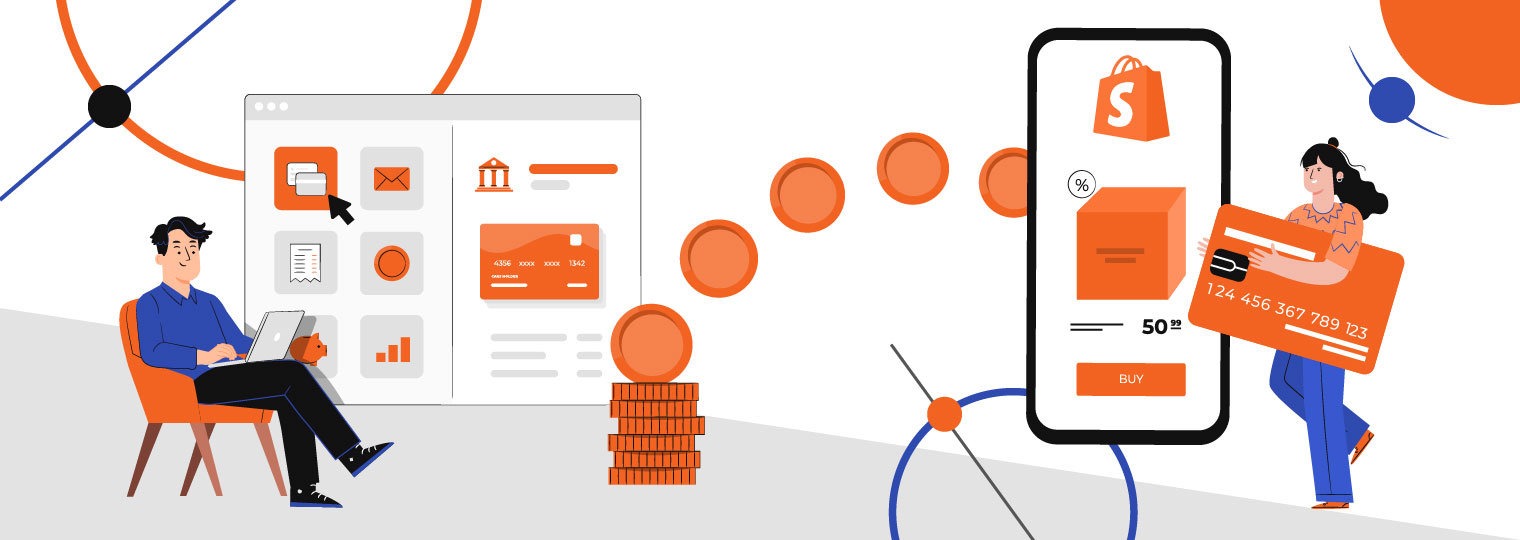Table of Contents
Setting up an online store has never been easier, and Shopify is among the leading e-commerce platforms helping entrepreneurs launch their businesses quickly. One of the most critical aspects of running a Shopify store is setting up payment gateways. Payment gateways are the bridge that connects your online store to payment processing networks, enabling customers to pay securely and seamlessly.
In this comprehensive guide, we’ll walk you through everything you need to know about how to set up payment gateways in Shopify, the best options available, and tips to optimize your payment process for maximum conversion rates.

Table of Contents
- What Is a Payment Gateway?
- Why Payment Gateways Are Essential for Shopify Stores
- Shopify’s Built-in Payment Gateways Overview
- Choosing the Right Payment Gateway for Your Shopify Store
- Step-by-Step Guide to Setting Up Payment Gateways in Shopify
- Shopify Payments Setup
- Adding Third-Party Payment Gateways
- Configuring Manual Payment Methods
- How to Test Your Payment Gateway Setup
- Tips to Optimize Payment Gateways for Higher Conversions
- Common Payment Gateway Issues and How to Fix Them
- Payment Gateway Fees: What You Need to Know
- Security Considerations for Payment Gateways in Shopify
- Final Thoughts
1. What Is a Payment Gateway?
A payment gateway is an online service that processes credit card and other electronic payments for online businesses. It acts as the intermediary between your customer, your store, and the financial institutions involved in the transaction.
When a customer makes a purchase, the payment gateway securely captures the payment information, verifies it with the bank, and authorizes or declines the transaction. It also ensures the data is encrypted and protected against fraud.
2. Why Payment Gateways Are Essential for Shopify Stores
For Shopify store owners, payment gateways are crucial because:
- They Enable Online Payments: Without a payment gateway, your customers cannot pay you.
- Security and Trust: Payment gateways offer secure transactions that help build customer trust.
- Support for Multiple Payment Methods: Credit cards, debit cards, digital wallets (Apple Pay, Google Pay), and more.
- Smooth Checkout Experience: Good payment gateways reduce friction during checkout, lowering cart abandonment.
- Compliance and Fraud Prevention: Helps comply with legal and security standards such as PCI DSS.
3. Shopify’s Built-in Payment Gateways Overview
Shopify supports several payment gateways, including its own:
Shopify Payments
Shopify’s native payment gateway simplifies the setup because it integrates directly with your store and supports multiple payment methods and currencies. It eliminates the need for third-party accounts, and you avoid extra transaction fees charged by Shopify on external gateways.
Other Popular Payment Gateways Supported by Shopify
- PayPal
- Stripe
- Authorize.net
- Amazon Pay
- 2Checkout
- Square
- Klarna
The availability of payment gateways can vary based on your country, so it’s essential to check which options are supported where you operate.
4. Choosing the Right Payment Gateway for Your Shopify Store
Choosing a payment gateway depends on several factors:
- Location: Some gateways work better in specific regions.
- Payment Methods Supported: Credit cards, wallets, local payment options.
- Transaction Fees: Compare gateway fees and Shopify’s own fees.
- Payout Speed: How fast funds get deposited in your account.
- Ease of Use: User-friendly setup and checkout experience.
- Security Features: Fraud detection and compliance.
For most Shopify merchants, Shopify Payments is the best starting point for its simplicity and cost-effectiveness. However, if your country or niche requires it, you might want to add alternatives like PayPal or Amazon Pay.

See also
- SEO for Beginners: What Is It and Why Does It Matter in 2025?
- Top 10 Common SEO Mistakes New Website Owners Make
- How to Install WordPress on Hostinger in 5 Minutes: A Step-by-Step Guide
5. Step-by-Step Guide to Setting Up Payment Gateways in Shopify
Now let’s dive into the actual setup process for payment gateways.
Step 1: Log In to Your Shopify Admin
Go to your Shopify admin dashboard by logging in at shopify.com/login.
Step 2: Navigate to Payment Settings
- From the admin panel, click Settings in the bottom-left corner.
- Select Payments from the options.
Here, you’ll see your payment options: Shopify Payments, third-party providers, and manual payment methods.
Step 3: Set Up Shopify Payments (If Available)
If Shopify Payments is available in your country, it will show up at the top.
- Click Complete account setup.
- Enter your business details including:
- Legal business name
- Employer Identification Number (EIN) or equivalent tax ID
- Business address
- Bank account details for payouts
- Personal identification info
Once submitted, Shopify verifies your info. After approval, Shopify Payments will be active.
Step 4: Add Third-Party Payment Gateways
If you want to offer additional payment options, or Shopify Payments isn’t available:
- Scroll down to Third-party payment providers.
- Click Choose third-party provider.
- Select your desired payment gateway from the list.
- Click Activate or Set up account.
- Follow the instructions to create or link your account.
- Enter your API keys or credentials as required.
- Save your settings.
Step 5: Set Up Manual Payment Methods (Optional)
You can also accept payments offline:
- Under Manual payment methods, click Add manual payment method.
- Choose options like Cash on Delivery, Bank Deposit, or create a custom payment method.
- Provide instructions to your customers.
- Save.
6. How to Test Your Payment Gateway Setup
Before launching your store, test your payment system:
- Enable Test Mode in your payment gateway settings (if supported).
- Make a test purchase using a test credit card number.
- Confirm the order goes through and appears in Shopify orders.
- Disable Test Mode afterward.
Testing helps avoid payment failures that frustrate customers.
7. Tips to Optimize Payment Gateways for Higher Conversions
- Offer Multiple Payment Options: Credit cards, PayPal, Apple Pay, Google Pay.
- Enable Guest Checkout: Avoid forcing account creation to reduce cart abandonment.
- Display Security Badges: Build trust with SSL certificates and verified payment logos.
- Optimize Mobile Checkout: Many shoppers use mobile devices.
- Use One-Page Checkout: Simplify the checkout process.
- Provide Clear Payment Instructions: Avoid confusion especially with manual payments.
8. Common Payment Gateway Issues and How to Fix Them
- Declined Transactions: Check if the card has enough funds or if billing address matches.
- Payment Gateway Not Supported in Your Country: Choose an alternative gateway.
- API Key Errors: Verify your credentials are entered correctly.
- Currency Mismatch: Make sure your store currency matches payment gateway settings.
- Slow Payouts: Contact your gateway support to inquire about payout schedules.
9. Payment Gateway Fees: What You Need to Know
Payment gateways usually charge:
- Transaction Fees: Percentage + fixed amount per transaction.
- Monthly Fees: Some gateways charge monthly account fees.
- Currency Conversion Fees: If you sell internationally.
- Chargeback Fees: Fees for disputed payments.
Shopify Payments waives Shopify transaction fees, but third-party gateways might incur additional fees, so factor this in your pricing.
10. Security Considerations for Payment Gateways in Shopify
- Shopify is PCI DSS compliant, meaning it meets strict security standards.
- Use SSL Certificates to encrypt customer data.
- Enable fraud detection tools offered by payment gateways.
- Monitor transactions for suspicious activity.
- Keep your Shopify software and apps updated.
Security is vital to protect your business and customers.

11. Final Thoughts
Setting up payment gateways in Shopify is straightforward but requires attention to detail. Selecting the right payment methods and ensuring a smooth checkout experience can significantly impact your sales and customer satisfaction.
By following this guide, you can confidently set up and optimize payment gateways on your Shopify store, helping you build trust and boost conversions in 2025 and beyond.


